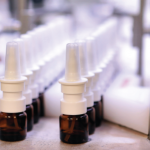Upon activation, mast cells secrete active IL-1ß. That enhancement of Th17 responses by mast cells is mediated through IL-1ß. The release of IL-1ß by mast cells can influence T cell-independent responses. In RA, the synergy in cytokine and chemokine production may contribute to chronic inflammation.
Mast cells could be either anti-inflammatory or pro-inflammatory in arthritis, and the difference may depend on the timing of the infection of cells. Glycosylation may be important in mast cell activation with ACPA, Dr. Toes said.3
The Role of Complement
What do we know about the role complement plays in autoimmunity in diseases like lupus? Complement, part of innate immunity, acts to destroy and clear pathogens.Scientists first discovered the complement system during study of the lysis of bacteria. “E. Coli could be blown away by it quickly,” said John P. Atkinson, MD, director of the Division of Rheumatology at Washington University School of Medicine in St. Louis.
In the humoral immune system, antibodies are specific, acquired and stable, while complement is innate, labile and non-specific. Antibodies and complement are both mediators of blood transfusion reactions.
In 1954, immunologist Louis Pillemer first described properdin, a complement factor, and an “alternate pathway of complement activation” that did not depend on antibodies, said Dr. Atkinson. Proponents of the classical pathway proponents attacked his ideas, but today, it’s accepted along with a third, the lectin pathway. All three pathways of complement activation generate variants of the protease C3.
Complement deficiency may make a patient more likely to develop infections like Neisseria meningitides or autoimmune diseases, such as SLE. Patients who are deficient in the complement component C1q have about a 90% chance of developing lupus, and those too low in C4 have a 75% chance, Dr. Atkinson said.4
“Why do they have lupus? Because they can’t clear complement,” said Dr. Atkinson. If immune complexes cannot be cleared, inflammation may be the end result. “This points to the idea that if you can’t clear debris, there is a problem.”
Patients who are deficient in the complement regulators Factor H and Factor I can’t control their complement system, and are vulnerable to infections, such as atypical hemolytic uremic syndrome, he said.5
Can we manipulate the complement pathway to help treat disease? Eculizumab is one complement inhibitor on the market. “It’s the most expensive drug in the world at $600,000 a year. It’s a monoclonal antibody that binds to C5 in the complement pathway, and it works,” said Dr. Atkinson.6 There is potential to develop therapeutic agents that block other complement factors and, in the future, possibly biosimilars, he said.

